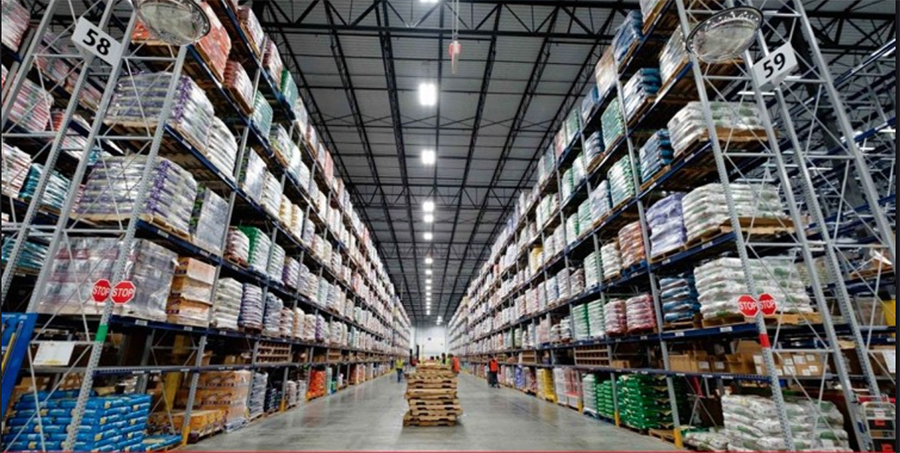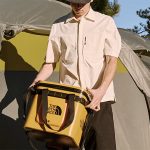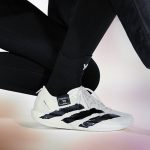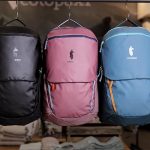On Crocs, Inc.’s Q1 analyst call, Andrew Rees, CEO, said the footwear maker suspended its guidance for 2025 primarily due to the company’s inability to forecast the financial impact from future tariffs and identified a further $50 million in additional savings to offset the potential fallout.
The moves came as Crocs reported modest sales growth in the first quarter, which handily topped analyst targets for both the Crocs and Heydude brands, exceeding management expectations.
“While we are encouraged by the performance of our overall business in April, it is challenging to predict how consumers may respond to prolonged uncertainty,” said Rees on the call. “It is possible that in the future we could see softer demand for footwear and other consumer goods, particularly given the potential for increased costs and higher prices across the industry that could further burden an already choiceful consumer.”
 Company CFO, Susan Healy, said that if the incremental 145 percent tariff on China remained in place along with the 10 percent on all other sourcing destinations, Crocs could face a cost of approximately $130 million on an annualized cash basis based on its sourcing mix. The company manufactures roughly 45 percent of its product assortment in Vietnam, 17 percent in Indonesia, 13 percent each in China and India, and 5 percent each in Mexico and Cambodia.
Company CFO, Susan Healy, said that if the incremental 145 percent tariff on China remained in place along with the 10 percent on all other sourcing destinations, Crocs could face a cost of approximately $130 million on an annualized cash basis based on its sourcing mix. The company manufactures roughly 45 percent of its product assortment in Vietnam, 17 percent in Indonesia, 13 percent each in China and India, and 5 percent each in Mexico and Cambodia.
Crocs’ officials also noted on the call that the company could face additional tariffs following the 90-day pause on reciprocal tariffs on countries outside China, Canada and Mexico.
Healy said Crocs is pursuing three primary levers to mitigate the potential impact of tariffs: (1) adjusting its sourcing mix into the U.S., (2) further reducing costs, and (3) evaluating potential price increases.
Rees said the extent of any price increases would largely depend on the level of incremental costs that could come from tariffs.
“We do expect the industry to go up in terms of price,” said Rees. “I would say, at this point, we’re being super strategic around that. We have probably initiated a very small number of very targeted price increases to mitigate some selective issues. And we’re in a wait-and-see mode, but doing a substantial amount of preparatory work to understand where and how we should manage price in the future. But, I think, it’s a lever that we expect the industry to use, and we will use as well.”
First-Quarter Results Top Plan
In the first quarter, Crocs’ sales, gross margins, operating margins, adjusted earnings per share, and cash flow arrived above company guidance due to healthier sell-through at the Crocs and Heydude brands.
Consolidated revenues were $937 million, approximately flat, or an increase of 1.4 percent on a cc basis. Crocs had estimated sales of about $904 million. Direct-to-consumer (DTC) revenues grew 2.3 percent, or 3.5 percent on a constant-currency (cc) basis. Wholesale revenues contracted 1.6 percent, or approximately flat on a cc basis.
Gross margin was 57.8 percent compared to 55.6 percent. Adjusted gross margin grew 180 basis points to 57.8 percent compared to 56.0 percent.
SG&A expense increased 7.8 percent to $319 million. On an adjusted basis, SG&A expense grew 17.8 percent to $319 million, rising to 34.0 percent of revenues compared to 28.8 percent.
Income from operations decreased 1.5 percent to $223 million, while adjusted operating income fell 12.4 percent to $223 million, resulting in an adjusted operating margin of 23.8 percent compared to 27.1 percent. Adjusted operating margin was forecasted to be approximately 21.5 percent.
On a reported basis, earnings grew 5.0 percent to $160.1 million, or $2.83 a share. On an adjusted basis, earnings declined 7.8 percent to $169.7 million, or $3.00, easily ahead of Crocs’ guidance in the $2.38 to $2.52 range.
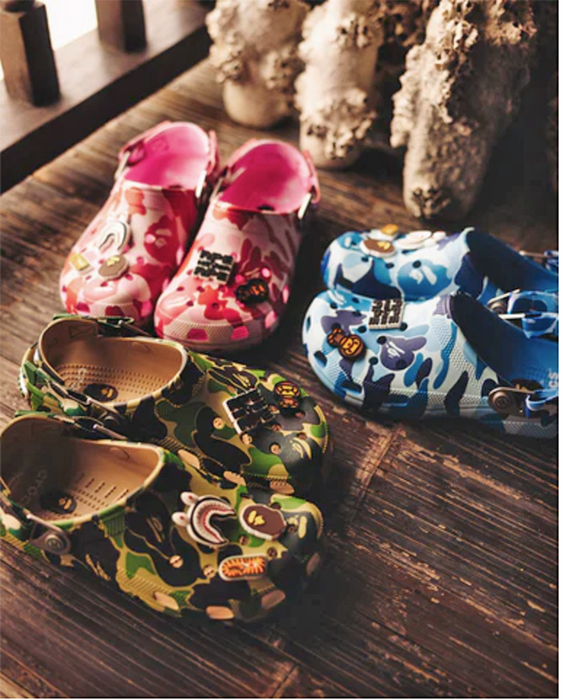 Crocs Brand Boosted by International Growth, NA Tops Plan
Crocs Brand Boosted by International Growth, NA Tops Plan
Crocs Brand revenues increased 2.4 percent (4.2 percent on a cc basis) to $762 million. Crocs Brand was projected to be down approximately 1 percent to flat compared to the first quarter of 2024. The gains were led by double-digit growth in International and an above-plan performance for the North American business.
By channel, DTC revenues for the Crocs Brand increased 1.1 percent (+2.5 percent on a cc basis) to $285 million, while wholesale revenues gained 3.2 percent (+5.3 percent on a cc basis) to $477 million.
By region, North America revenues for the Crocs Brand decreased 3.8 percent (-3.4 percent on a cc basis) to $369 million, but topped expectations with DTC and wholesale declines of 2 percent and 5 percent, respectively.
International revenues for the Crocs Brand increased 8.9 percent (+12.3 percent on a cc basis) to $393 million with balanced growth across wholesale and DTC channels. China accelerated in the quarter, growing more than 30 percent, supported by the addition of 40 new partner doors.
In April, Crocs secured its second Super Brand Day on Tmall, and nine of the Top 10 footwear styles on the platform during the event were Crocs Brand. In other international markets, the company saw robust growth in Western Europe, led by France and Germany.
Regarding product, Crocs Classic Clogs led growth in the category and growth within established franchises such as Echo and new franchises InMotion. In Asia, the BAE and Crush saw “notable success,” according to Rees.
Sandals, led by Style Sandals, outperformed the overall clogs brand. A tightening of its sandal offerings resulted in higher productivity per franchise. Said Rees, “The strength was broad-based across our style sandal franchises, including Getaway, our number one franchise, Brooklyn and Miami. Year-to-date we are seeing very strong sell-throughs across these core style franchises, and our strategic accounts are chasing receipts.”
Other successes include Crocs Brand’s limited release collaboration with Tokyo-based streetwear brand Bape, which “drove an exceptional level of traffic to our websites and app while garnering nearly 70 percent new customer acquisition.”
Heydude Wholesale Revenues Slump 18 Percent
Heydude Brand’s revenues decreased 9.8 percent (-9.5 percent on a cc basis) to $176 million. The company expected the brand to be down approximately 16 percent to 14 percent compared to the first quarter of 2024.
“We continue to make progress on stabilizing the brand in North America, and I am very pleased with how the team has executed to deliver a better-than-expected first quarter,“ said Rees.
By channel, Heydude’s DTC revenues increased 8.3 percent (+8.3 percent on a cc basis) to $65 million, accelerating from the fourth quarter. Wholesale revenues decreased 17.9 percent (-17.4 percent on a cc basis) to $111 million.
Accomplishments included Heydude’s first TikTok Shop Super Brand Day, which saw the brand rank as the No.1 footwear brand across the platform, with particular success in the Austin Lift and HEY-2-0 Styles. Heydude’s Sydney Sweeney Times Austin Lift Fashion Crisis Hotline campaign reached 8 million consumers, surpassing all internal benchmarks.
In product, Heydude continues to refocus on its icon styles, the Wendy and Wally, through color materialization and partnerships across three platforms: Stretch Sox, Stretch Canvas and Funk Mono. The transition of the Wally Socks program to the Wally Stretch Sox was reported by the company to be well received by retailers.
The company introduced two iterations of the Jelly Roll Times Heydude Wally, with the second launch starting as an early access exclusive release on TikTok Shop, selling out within the day.
Said Rees, “ASP (average selling price) for the Heydude Brand was up low single-digits to last year, our seventh consecutive quarter of positive ASP growth. We also saw full price sales in our own.com improve nicely in the quarter fueled by product newness including the Austin Lift and the Paul.“
Outlook Update
Providing some guidance, Healy noted that the company’s brands performed well in April. She said that the company expects the tariffs to adversely impact Heydude’s gross margin rate more than the Crocs Brand, given higher China sourcing exposure for Heydude. The company expects the overall gross margin pressure from the tariffs to start in Q2, with the most significant impact in the second half. Crocs will continue to seek to identify other areas for cost savings beyond the $50 million and will also carefully manage forward unit inventory levels with incremental tariffs that add higher average unit costs.
Rees concluded, “As we have demonstrated in the past, we have a proven track record of coming out of periods of uncertainty stronger than we entered them. And I’m confident that the current reality presents a very strong opportunity to further our competitive advantages and gain market share.”
Images courtesy Crocs

